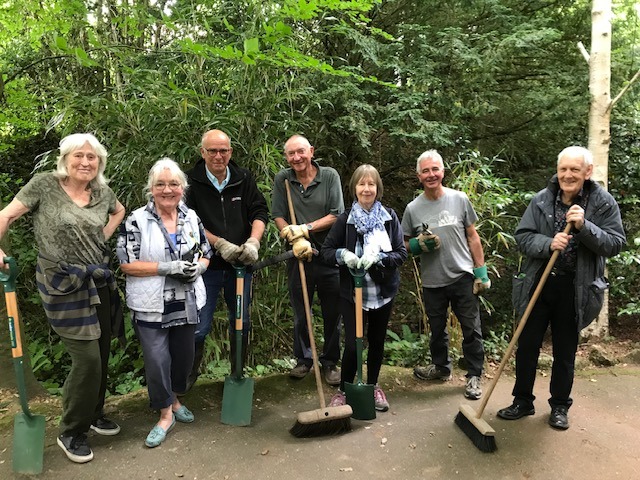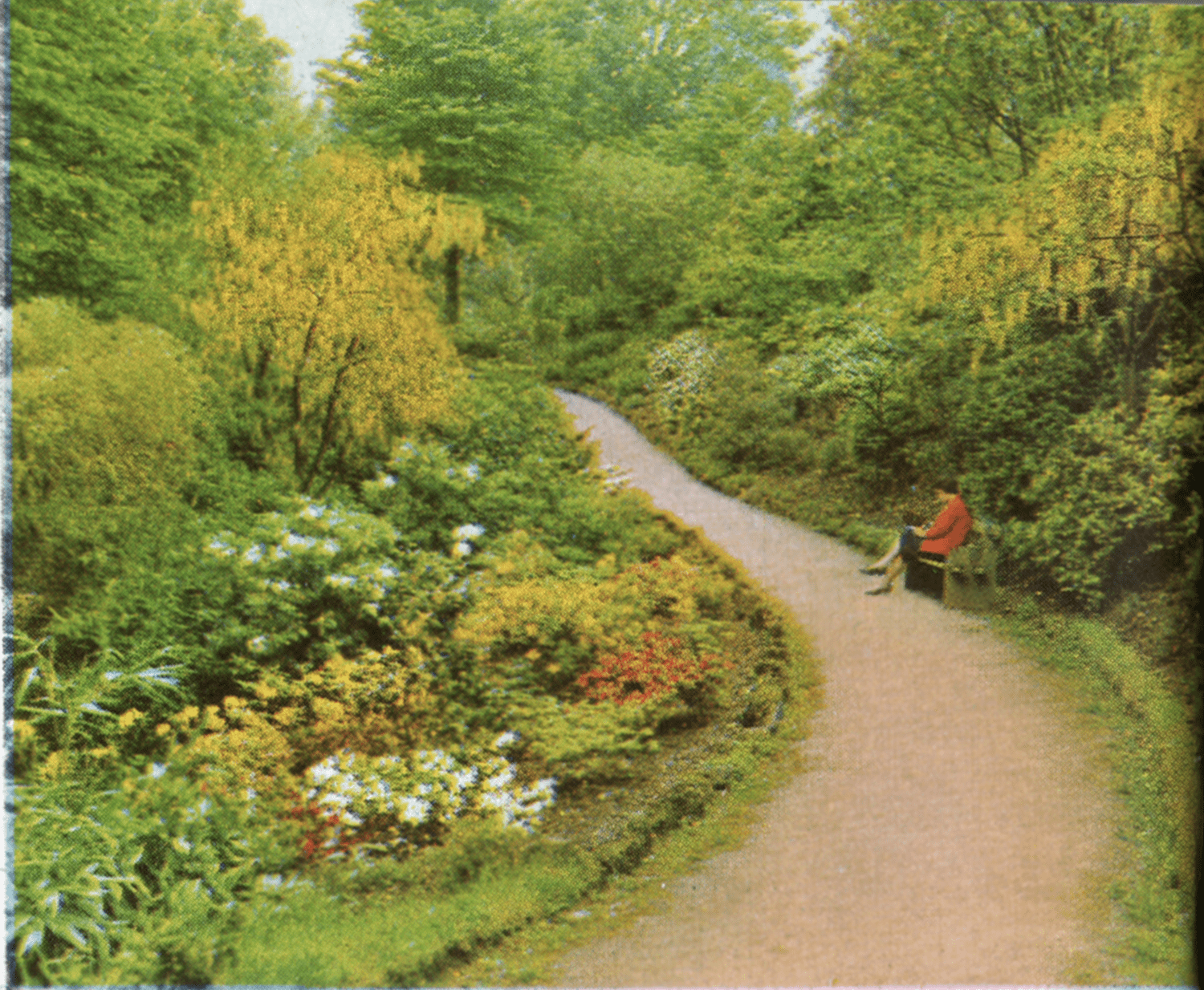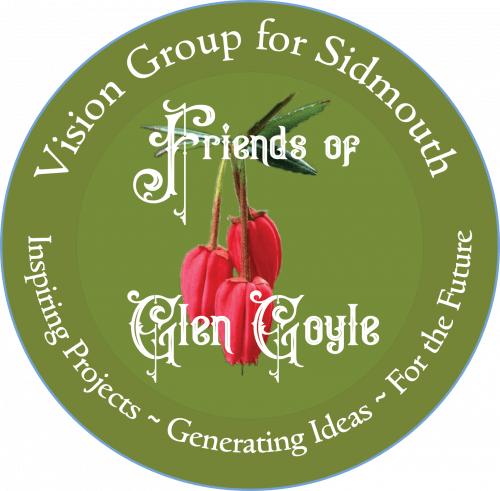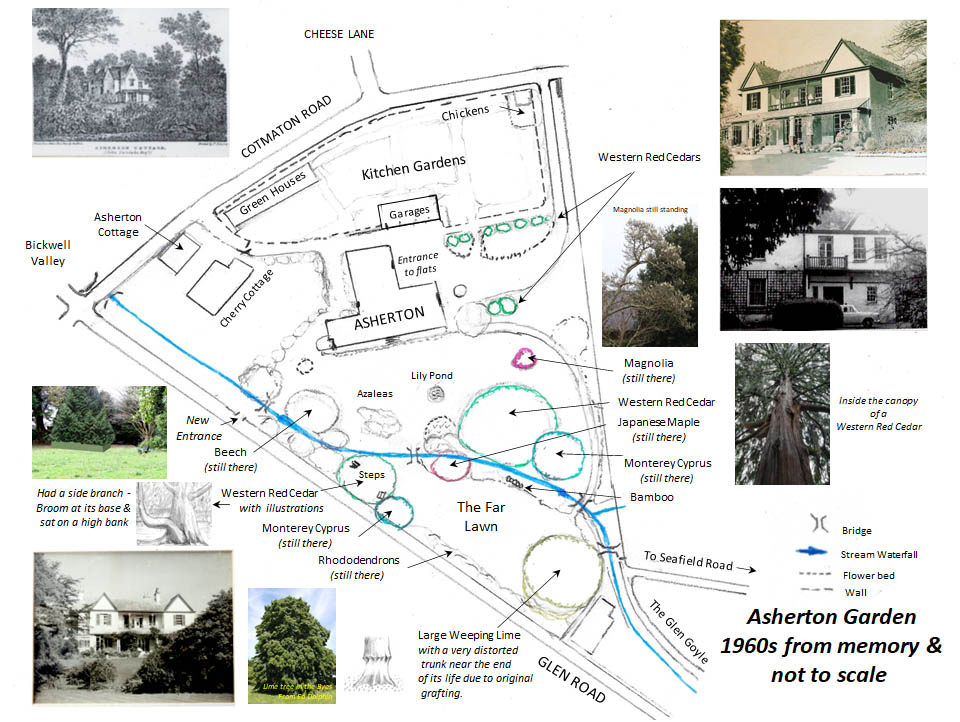It’s the summer solstice – and so a good time to look back over the last months, during which the warming sun has been coaxed through the gaps provided by the the team of volunteers as they work their way along the Glen…

…
It’s also a good time to look back to what has been done since the last newsletter back in the new year, when questionnaires were sent out asking how FOGG folk would like the Glen to be managed – with the results of the survey and the subsequent site visit here.
The early spring has been taken up with clearing a lot of cuttings and opening up the lawn – as a priority is to bring more light into the Glen, but without losing the charm and mystery of the place.
The later spring has been about looking to the next stages of planting, with the aim of enhancing biodiversity and generally increasing the richness and variety of the place. FOGG working party volunteer Katie Frost has worked her way down the Glen, taking photos to record exactly where we are now so we know what the gaps are and where we can work on further.
And over the summer, the FOGG volunteers will be working with EDDC Horticultural Officer Paul Fealey to finalise plans for both planting and infrastructure, as we look to further funding.
One possible plan which FOGG will not be following is a picture of how part of the Glen looked back in the 1960s when municipal formal beds were all the rage – but which is nevertheless fascinating to look at for its historical value:

…
Going back further, an inspiration for the nurturing of the Glen has been what the Victorians got up to – with plans to plant FOGG’s “signature tree” the Crinodendron hookerianum, aka the Chilean Lantern Tree – which forms the centre of the group’s logo, as designed by VGS webmaster Mary Walden Till:

…
Another, parallel project has been put together by FOGG friend Ed Dolphin, to create a fernery including all the local ferns recorded by legendary naturalist Peter Orlando Hutchinson:
As part of its survey of the local flora, the Sid Valley Biodiversity Group has located most of the species listed in Hutchinson’s book still living in and around the valley. Working with the Friends of Glen Goyle and EDDC, we hope to plant a new collection of Hutchinson’s ferns on the bank at the top end of Glen Goyle. Unlike the Victorians who plundered sites to the detriment of some species, all the ferns in the collection will be cultivated specimens, some grown from collected spores but most from commercial nurseries.
…
There has been lots of magic recorded along the Glen over the last months – including nocturnal videos of foxes plus the splash of colour of acers [aka Japanese maples] and rhododendrons from FOGG member John Hopkins – and regular fabulous photos from FOGG member Katie Frost, showing the growing variety and health of the Glen:
…
In the meantime, there has been further research carried out on the former gardens of Asherton House, by David Bassett who lived there back in the 1960s – with fascinating maps and updated notes:

…
To finish: it’s exactly one year since work began along the Glen, with a suitable anniversary appraisal provided by long-standing FOGG working party member Phil Lee:
Last year, the volunteers were mainly involved in saving the park from being taken over by brambles, ivy, bamboos, and a few other species, which had reduced the biodiversity of the area to just a few dominate species. This year, the light is penetrating through the canopy, existing plants are doing do much better, and new ground cover planting has a chance.
Look forward to seeing you along the Glen later in the summer – when we plan a little celebration marking one year on…



